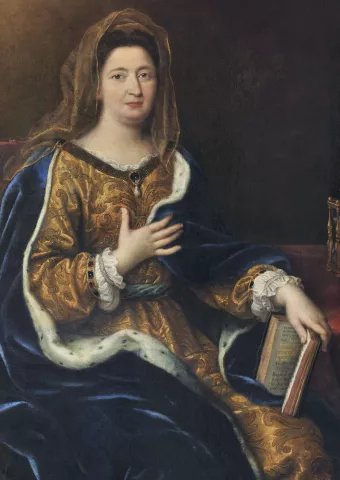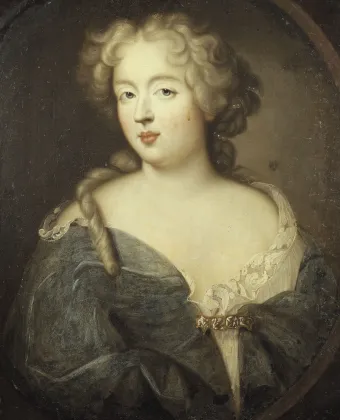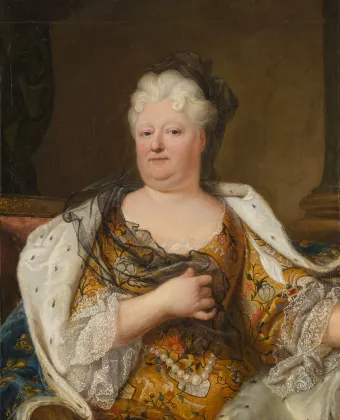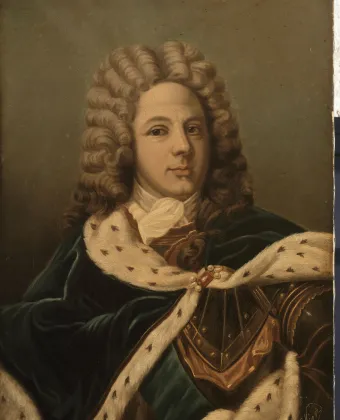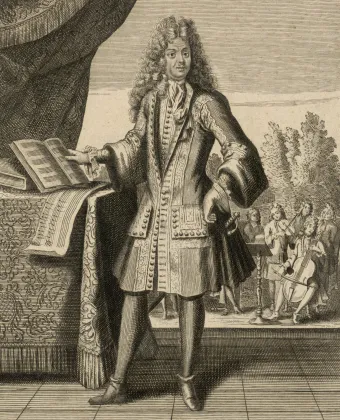Françoise d’Aubigné, Marquise de Maintenon, first appeared at Versailles in the 1670s. Born in 1635 in the prison at Niort, where her father was imprisoned for debt, she was orphaned in 1647 and in 1652 married the poet Paul Scarron, who was renowned as a master of the burlesque. Upon his death in 1660, Scarron left his wife with nothing more than his name and a mountain of debt. At the initiative of the Marquise de Montespan, the official mistress of Louis XIV whom she had met some years previously, she became governess to the king’s illegitimate children in 1669. This provided an excellent opportunity to meet the king in person when he came to visit his children. Louis’ first impression of her, it appears, was that she was “unbearable.”
Things soon changed. In 1675, again acting on the advice of the Marquise de Montespan, Louis XIV granted her two royal donations which enabled her to purchase the estate of Maintenon and take on the title which came with it. In 1680 she was given the position, created especially for her, of “second lady-in-waiting” to the Dauphine. Following the disgrace of the Marquise de Montespan in a poisoning scandal and the death of Queen Maria Theresa of Austria, she married the king in secret in 1683.
Madame de Maintenon held a great influence over Louis XIV, who visited her every day in her apartments overlooking the palace’s royal courtyard. He worked here, held meetings with his ministers, and enjoyed moments of tranquillity in the company of his secret wife. It is difficult to determine, nonetheless, how much of a role she played in the monarch’s political decisions. Her “reign”, which some contemporaries decried as strict and boring, did appear to coincide with a certain change in the king’s character. Madame de Maintenon bore much of the blame for this new state of affairs, which many courtiers resented. A few days before the death of Louis XIV in 1715, his powerful secret bride retired to Saint-Cyr, the school for girls which she had persuaded the king to found.
Madame de Maintenon was buried at the school for young girls she founded in Saint-Cyr, which was subsequently converted into a military academy by Napoleon. Her body was exhumed by revolutionaries in 1793. Her remains were rediscovered during the Second World War amid the ruins of the bombed academy and were transferred to the royal chapel at the Palace of Versailles, before being returned to Saint-Cyr in 1969.



